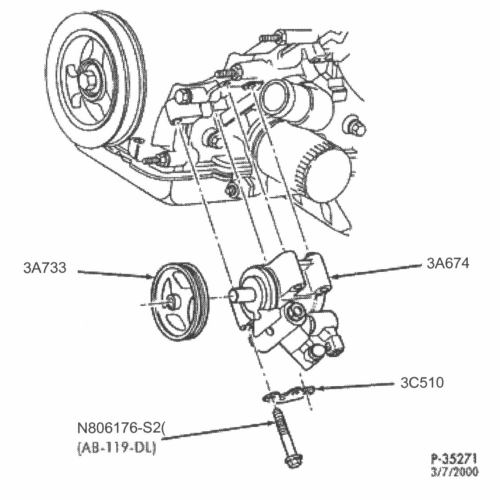Below are some pictures and comments about replacing a power steering
pump on 1992-2002 ford crown victoria, mercury grand marquis, and
lincoln towncars.
Items required:
-Power steering pulley puller/installer kit
-Power steering fluid
-3/8" socket set (for bolts that hold pump to engine block)
-Open end wrench set for pressure hose fitting
-Appropriate pressure hose
-18mm crows foot wrench (for pressure hose fitting at steering box)
-A couple feet of extension bars (for installing pressure hose fitting
at steering box)
-Hand ratchet
-Flat blade screw driver to pry the old return hose off of power
steering pump
-Low pressure return hose (Possibly not needed. You might be able to
reuse your old return hose)
-Cutting implement for pressure hose at the pump (i.e. bolt cutters,
sawzall,
hacksaw, electric angle grinder, etc)
A picture of the engine bay of a 1997 crown victoria (cooling fans and
air shrouds removed for added picture clarity)
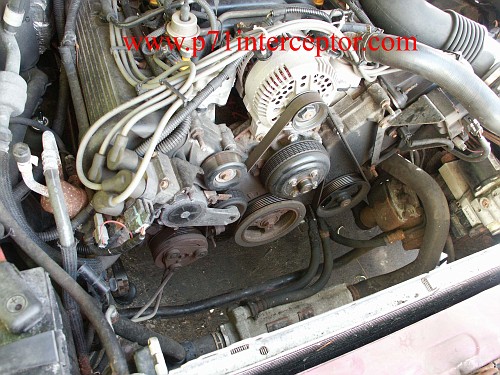
And a closeup of the power steering pump that is leaking and covering
the front engine cover in a thick black oil sludge.

The first step to the process is to remove the serpentine belt. This is
accomplished by placing a breaker bar in the pulley tensioner, and then
sliding the serpentine belt off of the front engine drive accessories.
We want to completely remove the drive belt from the engine bay because
power steering fluid is very slippery. And if we get any power steering
fluid on the belt, the belt will now slip around the accessory pulleys
without turning them.
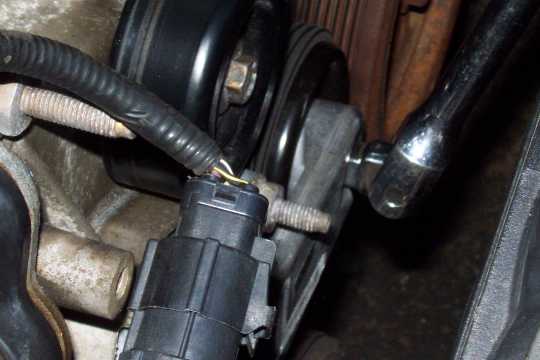
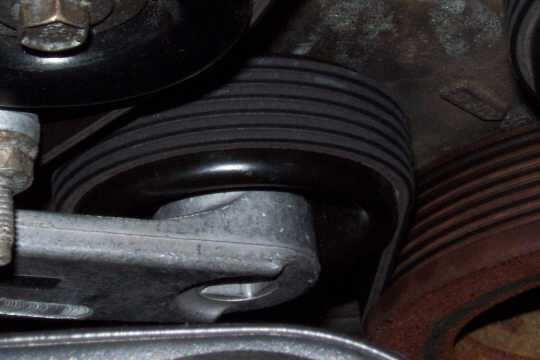
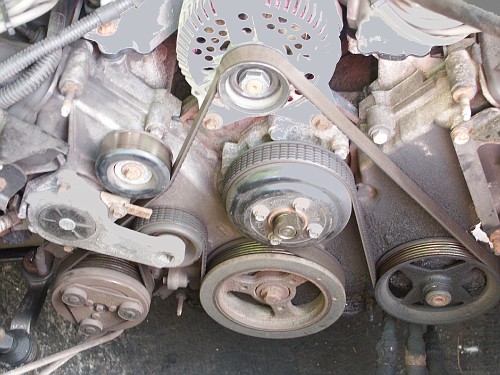
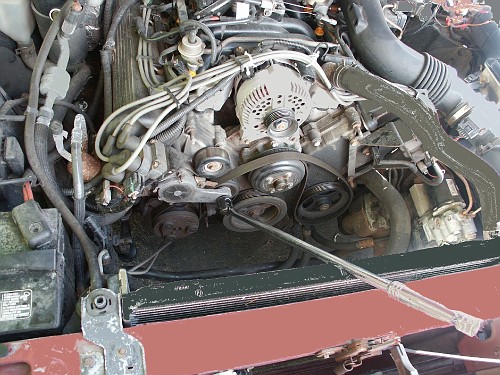
Now it's time to press the pulley off of the power steering pump using
a special tool set
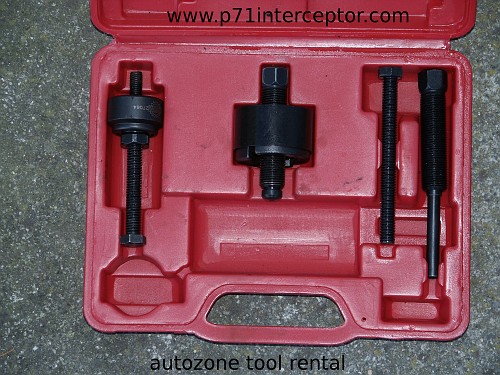
This set even comes with directions:
Pulley Puller/Installer Kit
Used to remove and install power steering pump pulleys on most domestic
vehicles.
PULLING
NOTE: Always lubricate forcing screw before using tool.
1. Secure component from which you are going to pull pulley.
2. Select proper forcing screw for your pulling job.
3. Place jaws around the pulley and around the pulling flange.
4. Place retaining ring around puller to secure jaws.
5. Begin tightening the forcing screw removing the pulley from shaft.
INSTALLING
1. Secure the component which you are going to install pulley to.
2. Select proper forcing screw for your application
3. Place pulley over shaft.
4. Thread screw fully into tapped hole on shaft
5. Using wrench slowly begin turning the hex above bearing forcing
pulley on to shaft.
Caution: Always wear eye protection!

Here, you can see the removal tool disassembled into it's individual
peices. Take note of the jaws which will grip the lip of the power
steering pump pulley

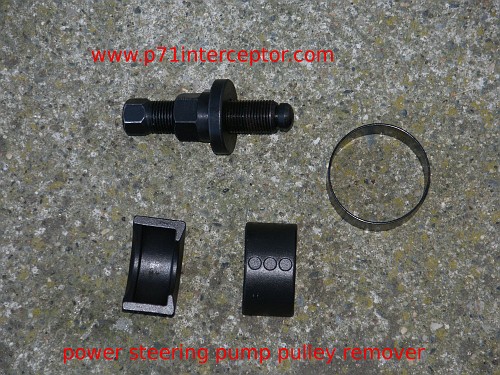
And here's the tool assembled a little bit more

And here it is with the locking ring wrapped around the pulley grabbing
jaws. And the pressing bolt extended outwards.
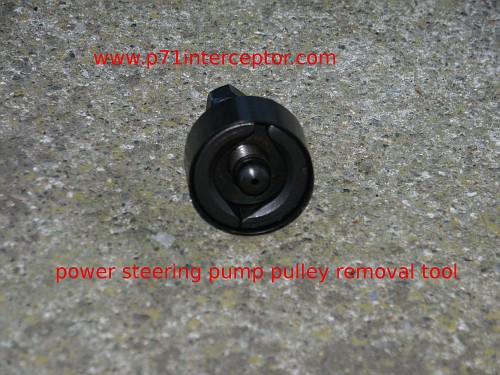
And the pressing bolt pulled back a little
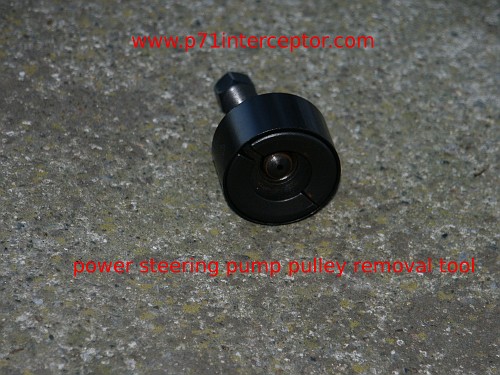
And yet a little more
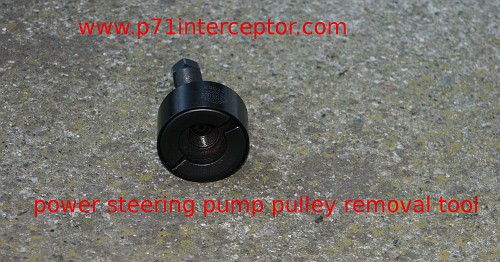
And fully out
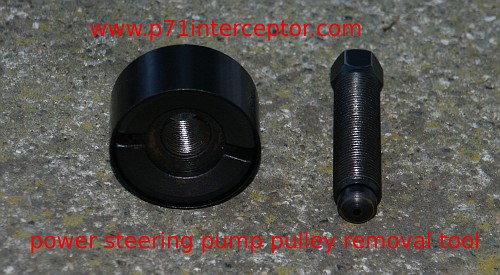

And here's the other side of the puller with the drive bolt in
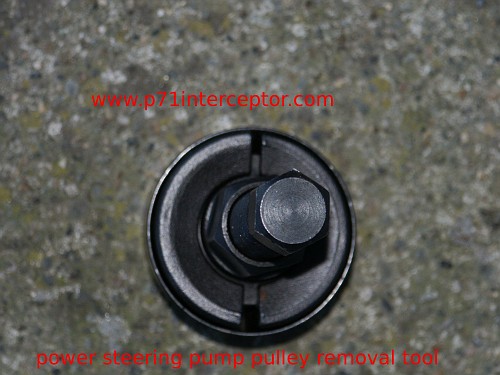
Now that we've seen the components of the puller and gotten an idea of
it's inner workings, it's time to install the puller onto the pump
pulley
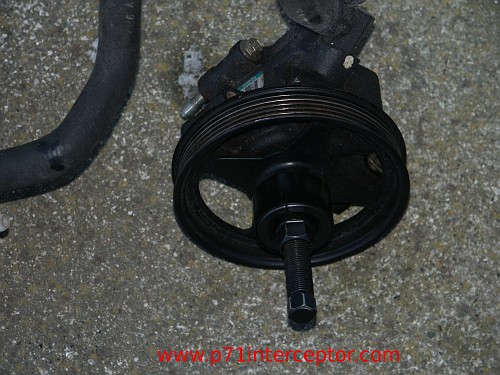

And press the pulley off the drive shaft

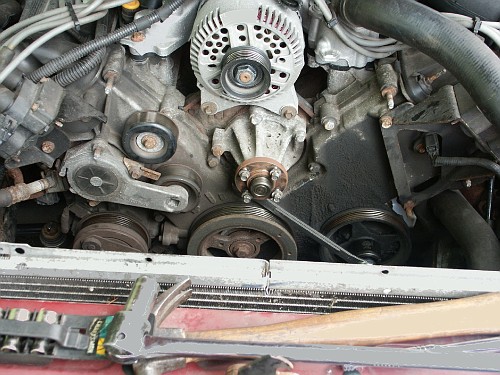
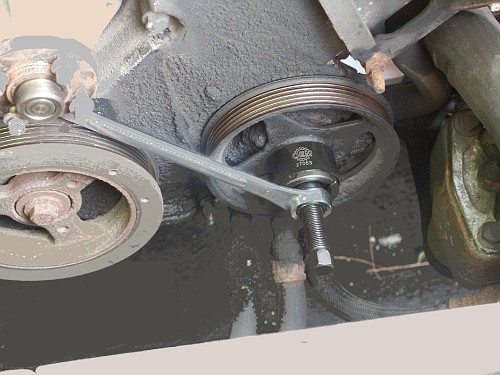
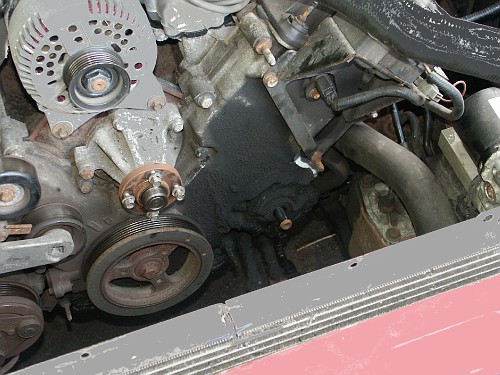



And with the pulley puller removed
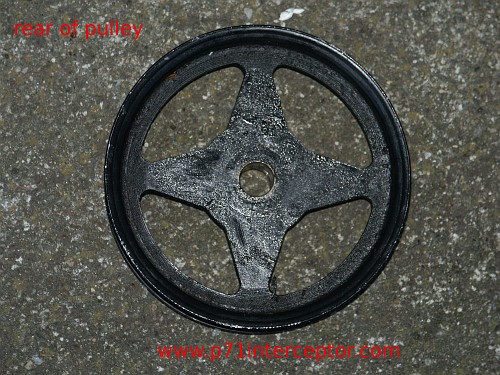
And the front of the pulley

And here's a couple pictures of power steering pump pulleys depicting
the lip on the front pulley that the jaws on the pulley remover will
grip onto. The donor pump with the 8-groove pulley is from a wrecked ~1
year old lincoln navigator with about 5k miles on it.
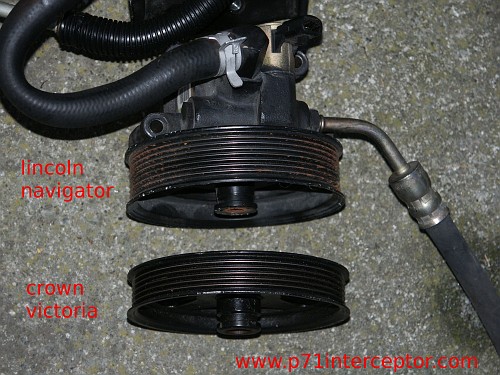
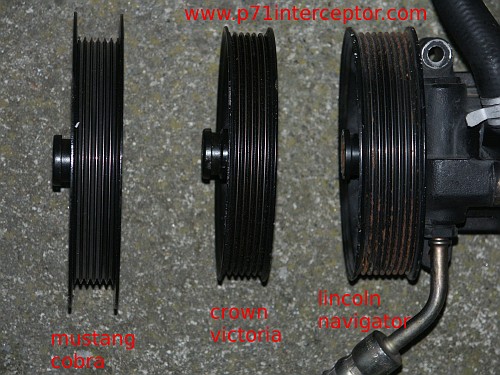
Now with the pulley off, we can remove the pressure line fitting from
the power steering pump. If you're really lucky, you might be able to
stick an open ended wrench on the pressure line fitting and turn the
fitting until it disengages from the pump.
But in the northeast, we usually end up cutting the hose off of the
fitting and then using a 6 point socket to turn the remaining nut.
1998-2002 crown vics are relatively easy to break the hose off of the
fitting. 1995-1997 crownvic pressure hoses have a 90 degree elbow made
of thick steel
that will take some time to cut through though.
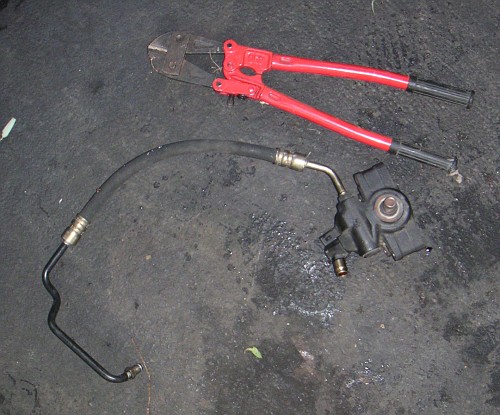
Bolt cutters work well for cutting through the pressure hose. And they
won't introduce debris into the power steering fluid like abrasive
cutters will.


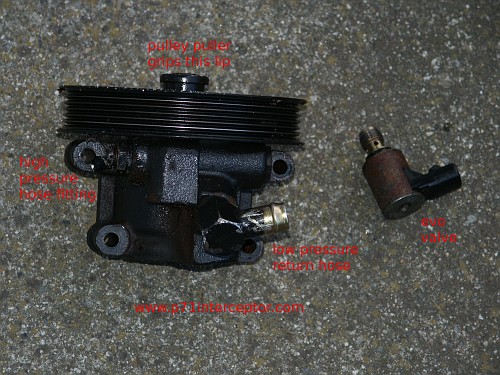
After the pressure hose is off, pry the return hose off and you'll be
able to use a ratchet to remove all 4 bolts that hold the power
steering pump to the engine block.
Note that the power steering fluid reservoir will drain all of it's
fluid out as soon as the return hose is disconnected from the pump. So
have a container under the hose to catch the fluid that drains.

You don't normally need to remove the waterpump pulley to replace the
power steering pump, but in this case a new waterpump is being
installed as preventive maintenance




And the pump removed from the engine block
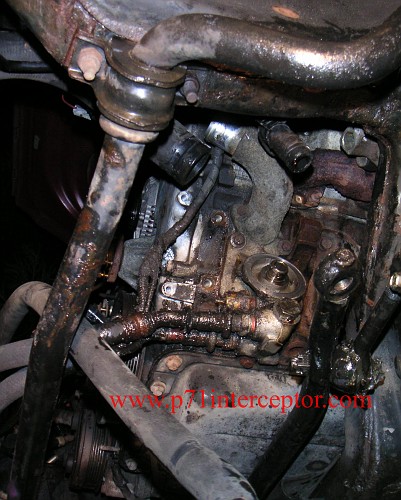

Notice how the front two bolts of the power steering pump attach to the
aluminum engine front timing cover, and the two rear bolts to the cast
iron engine block.
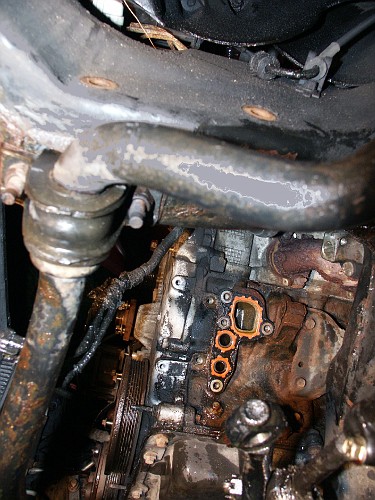
It's now time to bolt the new pump up to the engine block.

Note that most remanufactured power steering pumps come without a
replacement pulley. But you can likely reuse your old pulley as long as
your previous pump didn't have too much turning resistance and stripped
out the place in the pulley where the shaft slides through,.

If you reguraly run your crown vic's engine at high rpm's, now might be
a good time to install the mustang cobra pump pulley with the fead belt
shield welded onto it

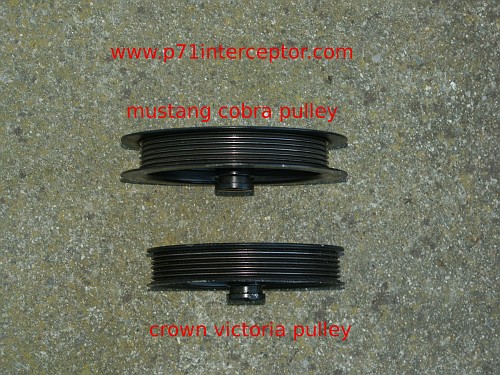
Remanufactured pumps often come without the evo valve installed too. So
you might have to re-use your old valve
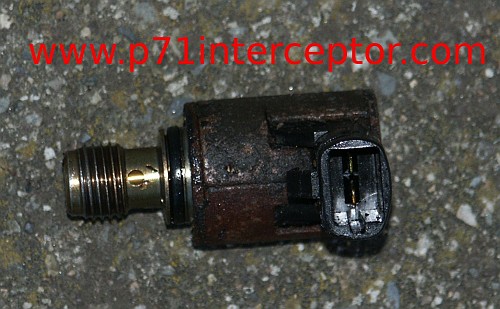
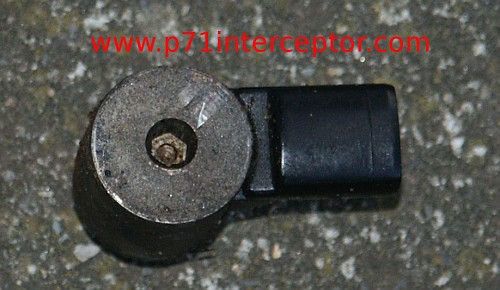

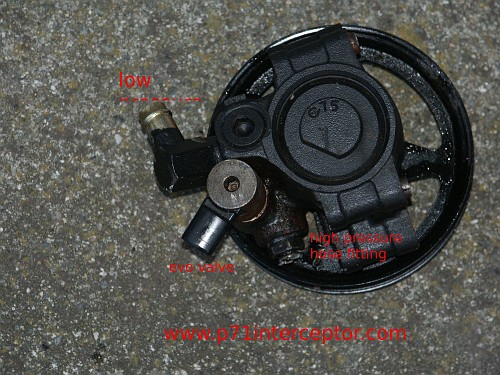

After the pump is bolted back to the engine block, install the new
pressure hose fitting onto the pump and then slide the low pressure
return hose onto it's fitting.

While the front engine accessory drive (FEAD) belt is removed, a new
idler pulley, tensioner assembly and waterpump are going to be
installed as preventative maintenance
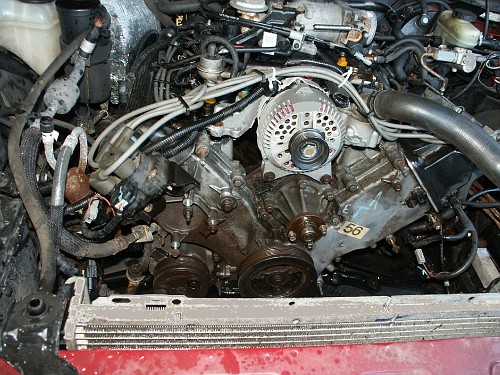

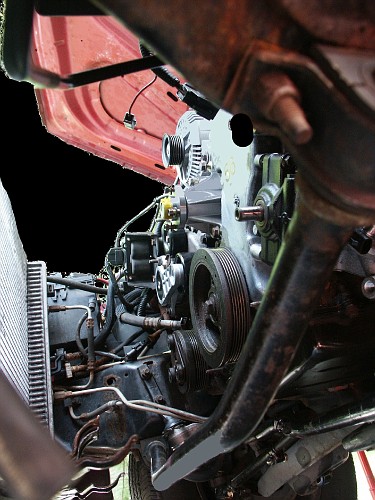
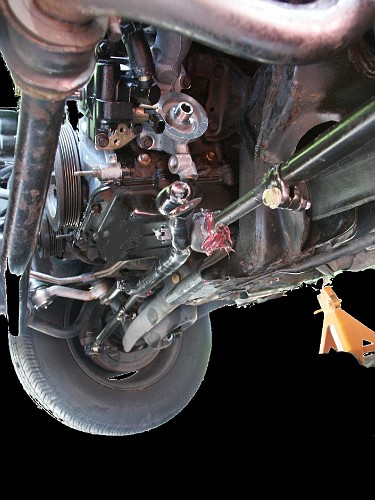
The new pressure and return hoses for a 1997 ford crown victoria


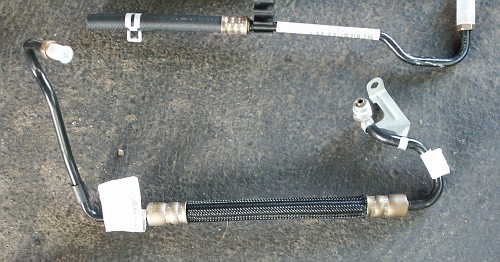
A closeup of the return hose

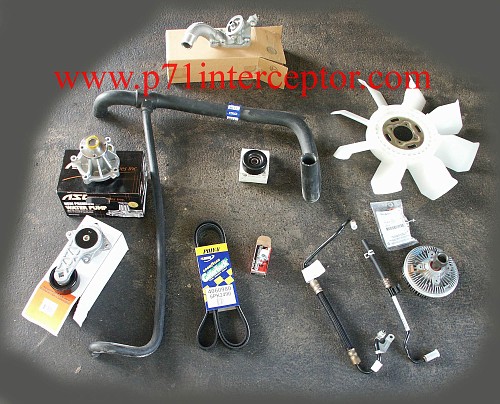
And now it's time to install pulley onto the power steering pump with a
special tool




The pulley installer screws into the threaded front of the pump shaft.
And then a wrench is used to turn the nut which presses the pulley onto
the shaft.

This set even comes with directions:
Pulley Puller/Installer Kit
Used to remove and install power steering pump pulleys on most domestic
vehicles.
PULLING
NOTE: Always lubricate forcing screw before using tool.
1. Secure component from which you are going to pull pulley.
2. Select proper forcing screw for your pulling job.
3. Place jaws around the pulley and around the pulling flange.
4. Place retaining ring around puller to secure jaws.
5. Begin tightening the forcing screw removing the pulley from shaft.
INSTALLING
1. Secure the component which you are going to install pulley to.
2. Select proper forcing screw for your application
3. Place pulley over shaft.
4. Thread screw fully into tapped hole on shaft
5. Using wrench slowly begin turning the hex above bearing forcing
pulley on to shaft.
Caution: Always wear eye protection!

Make sure that you stop turning the forcing nut once the pulley is
fully seated. If the front portion of the forcing bolt is broken off
inside the pump shaft, you'll be unable to reinstall the pulley on the
pump later should you ever need to.
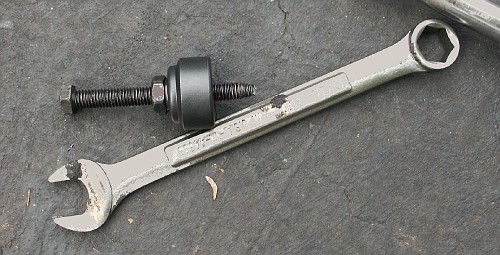
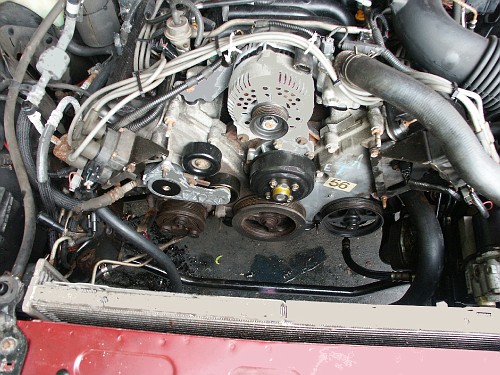


This tool set is a universal puller that works on vehicles other than
fords. And we won't be using the two parts located on the right of the
case on our crownvic.
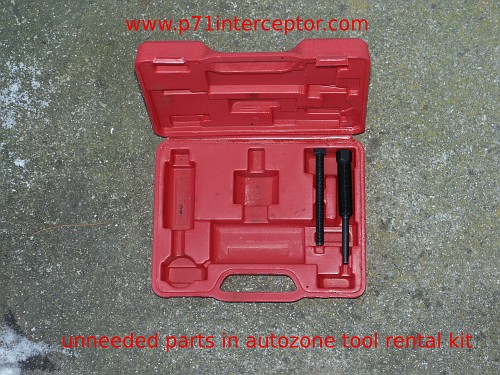
Now that the pulley is back on the car, it's time to:
-install the new pressure hose fitting onto the steering box using a
long extension bars with an 18mm crow's foot
-reinstall the front engine accessory drive (FEAD) belt
-pour some power steering fluid into the resivour
-bleed the air out of the system.
Installing the new power steering pump, hoses, and steering gear in the
1997 crownvic pictured above did greatly reduce the amount of power
steering fluid that the vehicle was consuming. But the power steering
fluid reservoir on the front drivers side fender liner had a hairline
crack in it which caused some fluid to leak out and coat the underside
of the fender liner.
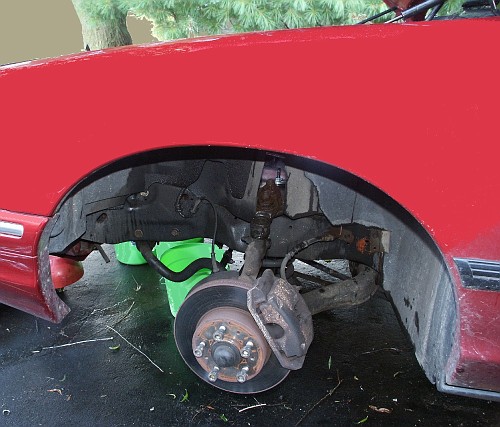
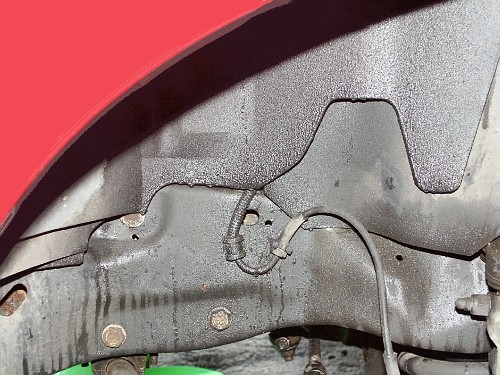
The car handles really sporty with lots of road feel now that the "new"
evo pump is installed and the police non-evo STG-35 steering box is
installed. The gear was replaced because the hydraulic control valving
inside was badly worn, and the box always wanted to make a hard right
turn. The stiffer torsion bar inside the "new" box that yielded
additional road feel was an added bonus.
Note that 1998 and later crown vics have a new location for the power
steering fluid reservoir and a redesigned reservoir too. Below are some
pictures of a couple similar late model ford power steering reservoirs,
one from
a lincoln navigator another from a ford mustang.
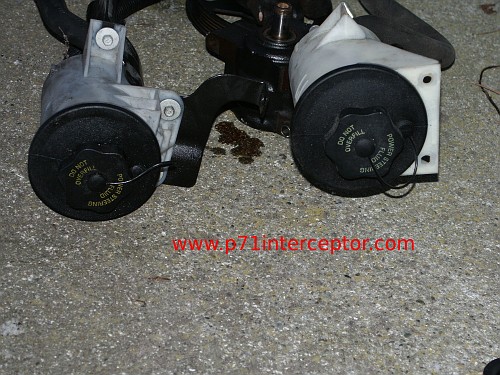
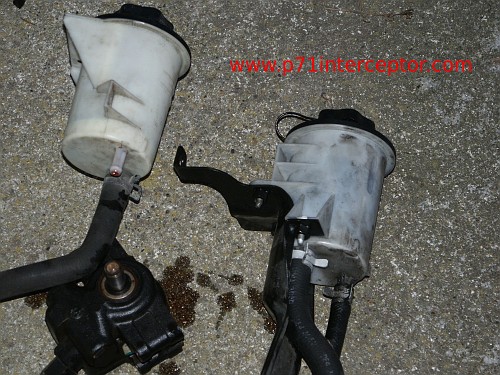
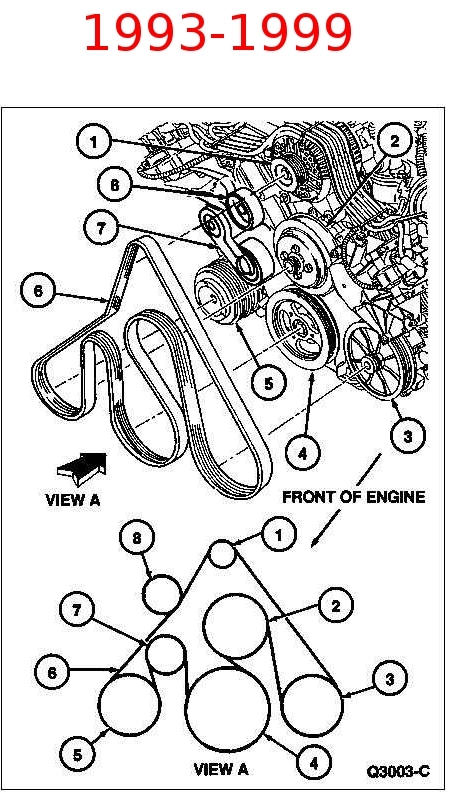

A popular upgrade for crownvic owners is the goodyear veyance gatorback
accessory drive belt. But make sure to get a gatorback belt with the
proper part number for your particular model year crownvic.
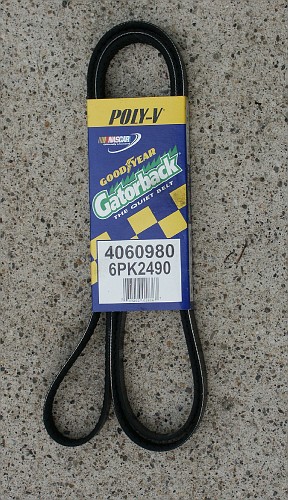
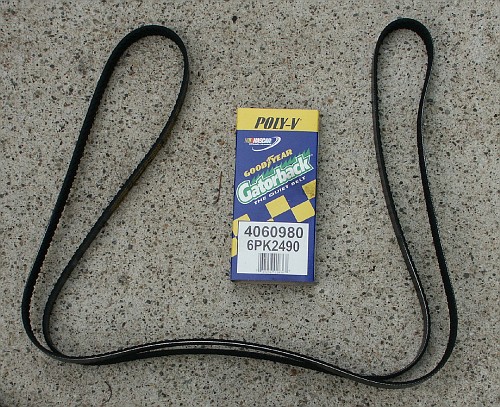
Also make sure to get the appropriate pressure hose for your particular
model year crownvic
1992-1994
Old style fitting at steering gear. Hose pictured below has port for
fluid pressure switch. Also a metal cap for the port is included in
case the switch is not needed for the application.
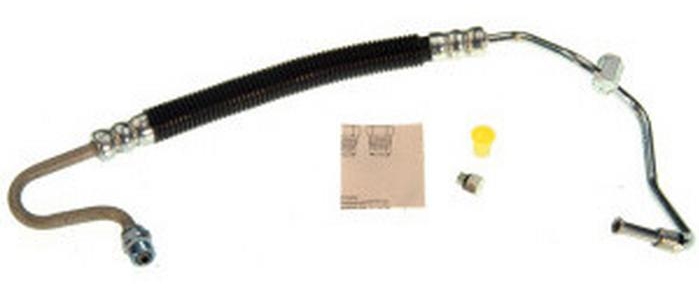
1995-1996
Old style fitting at steering gear
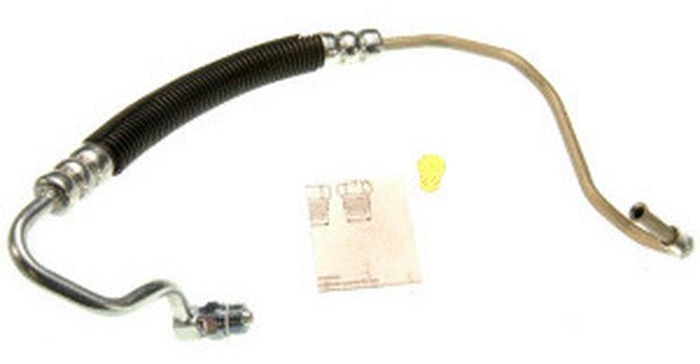
1997-1997
New style fitting at steering gear
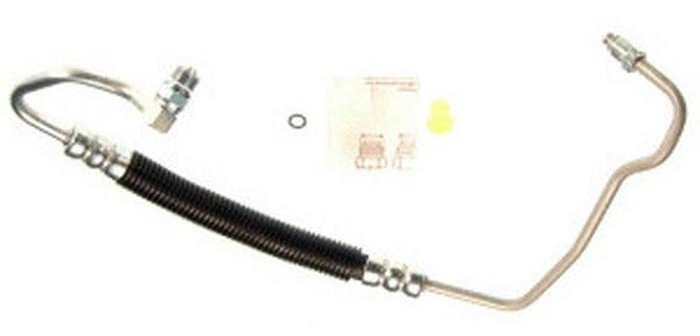
1998-2002
New style fitting at steering gear
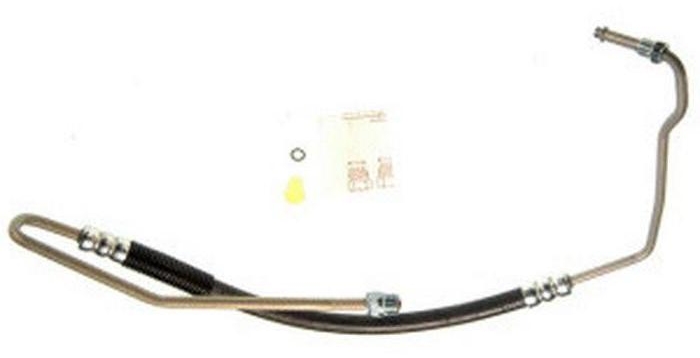
Notes:
Make sure to prime new power steering pump after installation, so the
new pump's initial startup isn't "dry". The ford shop recommends
disconnecting the fuel pump and using the electric starter motor
to crank over the engine a couple times to accomplish this. Some
technicians also report success turning the pump pulley over by hand
while adding fluid. Click here to
view an aftermarket service bulletin about this topic.
1993 and later crown vics all use a 6-groove power steering pump
pulley. Some ford trucks such as the lincoln navigator use an 8 groove
pulley. Early 1992 crown vics, used a 7 groove pulley. But the later
1992 crown vics used a 6 groove pulley.
1999-2002 police cruisers use a non-evo pump. But all 1992-2002
civilian crown vics use a pump with an evo valve on it.
Starting in 2003, the evo valve in crown victorias was relocated from
the pump itself onto the steering rack.
This article suggests removing the pulley from the power steering pump
while the pump is still bolted to the block.
-This allows extra clearance to get at the front bolts that hold the
pump to the engine
-This allows the mechanic to cut off the pressure hose fitting from
above the car in the engine bay, so that fluid will not drip onto their
face and metal will not be falling from above their head either
-And for the shadetree mechanic who does not have pneumatic air tools,
this holds the pump stationary so that one can use convential hand
tools to press the pulley off the shaft
The 1992-1997 crown vics have a pressure hose with a thick right angle
connection at the pump side that inhibits access to the mounting bolts.
If the fitting won't turn with a wrench, you will likely have to cut it
off.
If your car lives in a hot & dry enviroment, you can likely remove
the pump mounting bolts using a 1/4" ratchet set. If your car has lived
in the northeast, you will likely want a 3/8" drive ratchet and
possible pneumatic air impact tools to deal with corroded fasteners.
The pressure hose in this article is treated as a disposible item that
is going to be replaced during the pump replacement procedure. This
hose is relatively inexpensive to purchase, fatigues with age/mileage,
and also has a one use seal where the hose seals to the pump.
The low pressure return hose at the pump side often requires prying it
off the pump fitting with a flat blade screwdriver. Often, the old hose
will seal acceptably to the new pump and not have any leaks. Sometimes,
it doesn't seal properly and it seeps fluid a little. If the car you're
working on is a daily driver and you downtime is a concern, you might
want to order a new return hose from your ford dealer ahead of time.
